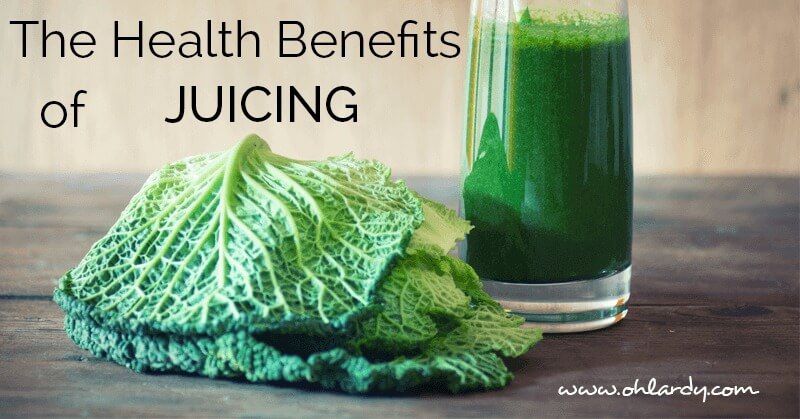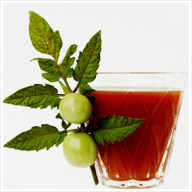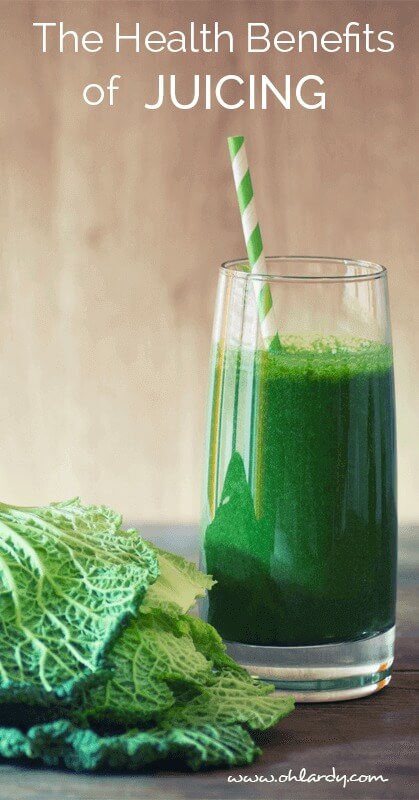The Health Benefits of Juicing
Oh Lardy! is a participant in the Amazon Services LLC Associates Program, an affiliate advertising program designed to provide a means for us to earn fees by linking to Amazon.com and affiliated sites.

By Dr. Mercola
Congratulations! You have made some great changes to your life. The last step will be to implement a juicing plan. I am firmly convinced that the benefits of juicing are the keys to giving you a radiant, energetic life, and truly optimal health.
I've said this in the other levels of this nutrition plan, but it's so important I'll say it again – valuable and sensitive micronutrients become damaged when you heat foods.
Cooking and processing food destroys these micronutrients by altering their shape and chemical composition. In this advanced nutritional level, you avoid all processed foods and eat only organic vegetables and fruits, unless not otherwise possible.
Virtually every health authority recommends that we get 6-8 servings of vegetables and fruits per day and very few of us actually get that. Juicing is an easy way to virtually guarantee that you will reach your daily target for vegetables.
While you can certainly juice fruits, if you are overweight, have high blood pressure, diabetes, or high cholesterol, it is best to limit using fruits until you normalize these conditions.
The exception would be lemons and limes which have virtually none of the offending sugar, fructose, that causes most of the metabolic complications. Additionally lemons or limes are amazing at eliminating the bitter taste of the dark, deep green leafy vegetables that provide most of the benefits of juicing.
Benefits of Juicing
There are three main reasons why you will want to consider incorporating vegetable juicing into your optimal health program:
- Juicing helps you absorb all the nutrients from the vegetables. This is important because most of us have impaired digestion as a result of making less-than-optimal food choices over many years. This limits your body's ability to absorb all the nutrients from the vegetables. Juicing will help to “pre-digest” them for you, so you will receive most of the nutrition, rather than having it go down the toilet.
- Juicing allows you to consume an optimal amount of vegetables in an efficient manner. If you are a carb type, you should eat one pound of raw vegetables per 50 pounds of body weight per day. Some people may find eating that many vegetables difficult, but it can be easily accomplished with a quick glass of vegetable juice.
- You can add a wider variety of vegetables in your diet. Many people eat the same vegetable salads every day. This violates the principle of regular food rotation and increases your chance of developing an allergy to a certain food. But with juicing, you can juice a wide variety of vegetables that you may not normally enjoy eating whole.
If you are new to juicing, I recommend a mid-priced juicer. The cheap centrifugal juicers (like the Juiceman) break easily, produce low-quality juice, and are very loud, which may contribute to hearing loss. They also don't last very long.
My favorite are the single gear juicers which are relatively fast, less expensive and easier to clean than more expensive juicers like twin gears or even the $2000 Norwalk juicers. Here is my current favorite juicer.
Many people initially think that juicing will be a real chore, but the majority are pleasantly surprised to find that it is much easier than they thought it would be.
Vegetable Juice is Not a Complete Meal
It is important to note that vegetable juice has very little protein and virtually no fat, so by itself, it is not really a complete food. It really should be used in addition to your regular meals not in place of it.
So unless you are undergoing some special fasting or detoxification program, it is probably unwise to use juicing as a meal replacement. Ideally, it can be consumed with your meal or as a between meal snack.
Important to Listen to Your Body
This is partly because you should only start by juicing vegetables that you enjoy eating non-juiced. The juice should taste pleasant — not make you feel nauseous.
It is very important to listen to your body when juicing. Your stomach should feel good all morning long. If it is churning or growling or generally making its presence known, you probably juiced something you should not be eating. Personally, I've noticed that I can't juice large amounts of cabbage, but if I spread it out, I do fine.
Lesson 1: Use pesticide free veggies.Here are a few simple lessons to get you up and help you enjoy the benefits of juicing quickly:
It is wise to choose organic whenever possible. However, some vegetables are worse than others. Below are the vegetables that are the most pesticide-loaded ones according to the Environmental Working Group.

So it would be wise to only purchase these vegetables if they are organically grown. The worst ones are listed first.
- Celery
- Spinach
- Kale
- Collard Greens
- Lettuce
- Carrots
- Cucumber (not as bad if you peel the skin)
Lesson 2: Get ready to juice!
Please note that the order listed below is only intended for those that are new to juicing so you do have a pleasant experience with it. However, if you use ¼ to ½ lemon or lime, you can start experimenting with the more bitter greens early on as the lemon and lime effectively counter their bitterness.
Please note that it would be FAR better to use lemon or limes than carrots, beets or apples, which have far more fructose than lemons or limes.
Step 1: If you are new to juicing, I recommend starting out with these vegetables, as they are the easiest to digest and tolerate:
- Celery
- Fennel (anise)
- Cucumbers
These three aren't as nutrient dense as the dark green leafy vegetables In the few days to weeks it takes you to adjust to the 3 vegetables listed above, you can start adding the more nutritionally valuable but less palatable vegetables into your juice.
Step 2: When you've acclimatized yourself to juicing, you can start adding these vegetables:
- Red leaf lettuce
- Green leaf lettuce
- Romaine lettuce
- Endive
- Escarole
- Spinach
An interesting side note: Cabbage juice is one of the most healing nutrients for ulcer repair as it is a huge source of vitamin U.
Step 3: When you're ready, move on to adding herbs to your juicing. Herbs also make wonderful combinations, and here are two that work exceptionally well:
- Parsley
- Cilantro
You need to be cautious with cilantro, as many cannot tolerate it well. So start off with a few sprigs and work your way up from there. You can use a few tablespoons if you have no side effects and enjoy the taste. If you are new to juicing, hold off on the cilantro. Herbs are more challenging to consume, but they are highly beneficial.
Step 4: The last step. The greens listed below are bitter:so start with smaller leaves at a time and be sure and balance it out with lime or lemon.
- Kale
- Collard Greens
- Dandelion Greens
- Mustard Greens (bitter)
When purchasing collard greens, find a store that sells the leaves still attached to the main stalk. If they are cut off, the vegetable rapidly loses many of its valuable nutrients.
Lesson 3: Make your juice taste great.
If you would like to make your juice taste a bit more palatable, especially in the beginning, you can add these elements:
- Lemons and Limes: You can also add one half to a whole lime or lemon for every quart of juice. You can actually juice the skin if you want to avoid the hassle of peeling them
- Cranberries: You can also add some cranberries if you enjoy them. Researchers have discovered that cranberries have five times the antioxidant content of broccoli, which means they may protect against cancer, stroke and heart disease. In addition, they are chock-full of phytonutrients, and can help women avoid urinary tract infections. Limit the cranberries to about 4 ounces per pint of juice.
- Fresh ginger: This is an excellent addition if you enjoy the taste. It gives your juice a little “kick”! And, as an added boon, researchers have found that ginger can have dramatic effects on cardiovascular health, including preventing atherosclerosis, lowering cholesterol levels, and preventing the oxidation of low density lipoprotein (LDL).
Lesson 4: Drink your vegetable juice right away, or store it very carefully.
Juicing is a time-consuming process, so you'll probably be thinking to yourself, “I wonder if I can juice first thing in the morning, and then drink it later?” This is not a good idea. Vegetable juice is HIGHLY perishable so it's best to drink all of your juice immediately.
However, if you're careful, you can store it for up to 24 hours with only moderate nutritional decline. This is really helpful if you are bringing your juice to work with you so you can consume it during the day.
How to store your juice:
- Put your juice in a glass jar with an airtight lid and fill it to the very top. There should be a minimum amount of air in the jar as the oxygen in air (air is about 20 percent oxygen) will “oxidize” and damage the juice.
- Purchase a food vacuum pump like Food Saver with a Ball jar attachment. You can pour your juice into a pint jar and put the lid on and use the Food Saver to suck out the air in the jar to vacuum pack it. This will remove most of the oxygen that will damage the juice.
- Immediately store it in the fridge and consume it when you are ready. It is best to drink it as soon as possible and in any case within 24 hours of juicing.
Most people juice in the morning, but if that does not work out well for your schedule, please feel free to choose whatever meal works best for your lifestyle.
Lesson 5: Clean your juicer properly.
We all know that if a juicer takes longer than a few minutes to clean, we'll find excuses not to juice at all. I find that using an old toothbrush works well to clean any metal grater. If you buy a high-quality juicer, the whole process should only take about 5 minutes. I find that using an old toothbrush works well on the metal grater. Whatever you do, you need to clean your juicer immediately after you juice to prevent any remnants from contaminating the juicer with mold growth.
NOTE: Nutritional Typing and Juicing
According to Nutritional Typing principles, if you are a carb type, vegetable juicing is STRONGLY recommended. With patients in our clinic, we strongly encourage it if they expect to regain their health. If you are a mixed type, it is certainly useful to juice. However, protein types need to follow some specific guidelines to make it work for them.
Protein Types and Juicing
If you are a protein type, juicing needs to be done cautiously. Celery, spinach, asparagus, string beans, and cauliflower would be your best vegetables to juice. You can add some of the dark deep leafy greens like collards, kale, and dandelion greens but do so cautiously and pay careful attention to how you feel.
You may also want to initially limit your serving size of juice to no more than 6 oz., and store it properly and drink smaller amounts throughout the day.
Also, to make drinking vegetable juice compatible with protein type metabolism (which needs high amounts of fat), it is important to blend a source of raw fat into the juice. Raw cream, raw butter, raw eggs, avocado, coconut butter, or freshly ground flax seed are the sources of raw fat that we most recommend.
In addition to adding a source of raw fat to your juice, you may also find that adding some, or even all, of the vegetable pulp into your juice helps to make drinking the juiced vegetables more satisfying.
This post was originally featured on Mercola.com.




I agree with a lot of what was said in this article; however, I do have to say that juices (mainly vegetable juices) can actually be a source of protein. Especially when juicing a large variety of green vegetables. Protein is made up of amino acids, and the key to getting enough protein when juicing or when on a vegan diet is combining these amino acids in the proper proportions so that complete protein chains are built. If you juice more ingredients like asparagus, kale, spinach, or broccoli, in larger amounts you will be getting protein in your juice.
Would I say that you want to substitute meals all of the time with juice? No, not always but you surely can sometimes. Small glasses of juice wont contain a lot of protein, but you down a large 32 ounce or bigger glass of green juice (jar maybe!) and you’re going to be getting some protein!
Great points about nutrition absorption, storing your juice, and listening to your body! I’m definitely not being critical as I know Dr. Mercola knows a lot about juicing, and I read as well as link to his content sometimes. I’m thinking his statements here about the protein in juicing were targeted at those who might not eat enough during a day, and try to substitute juices for meals more often so than not. Good read overall and I’m glad I found this article on your site! Will be sending some other people here to check it out!